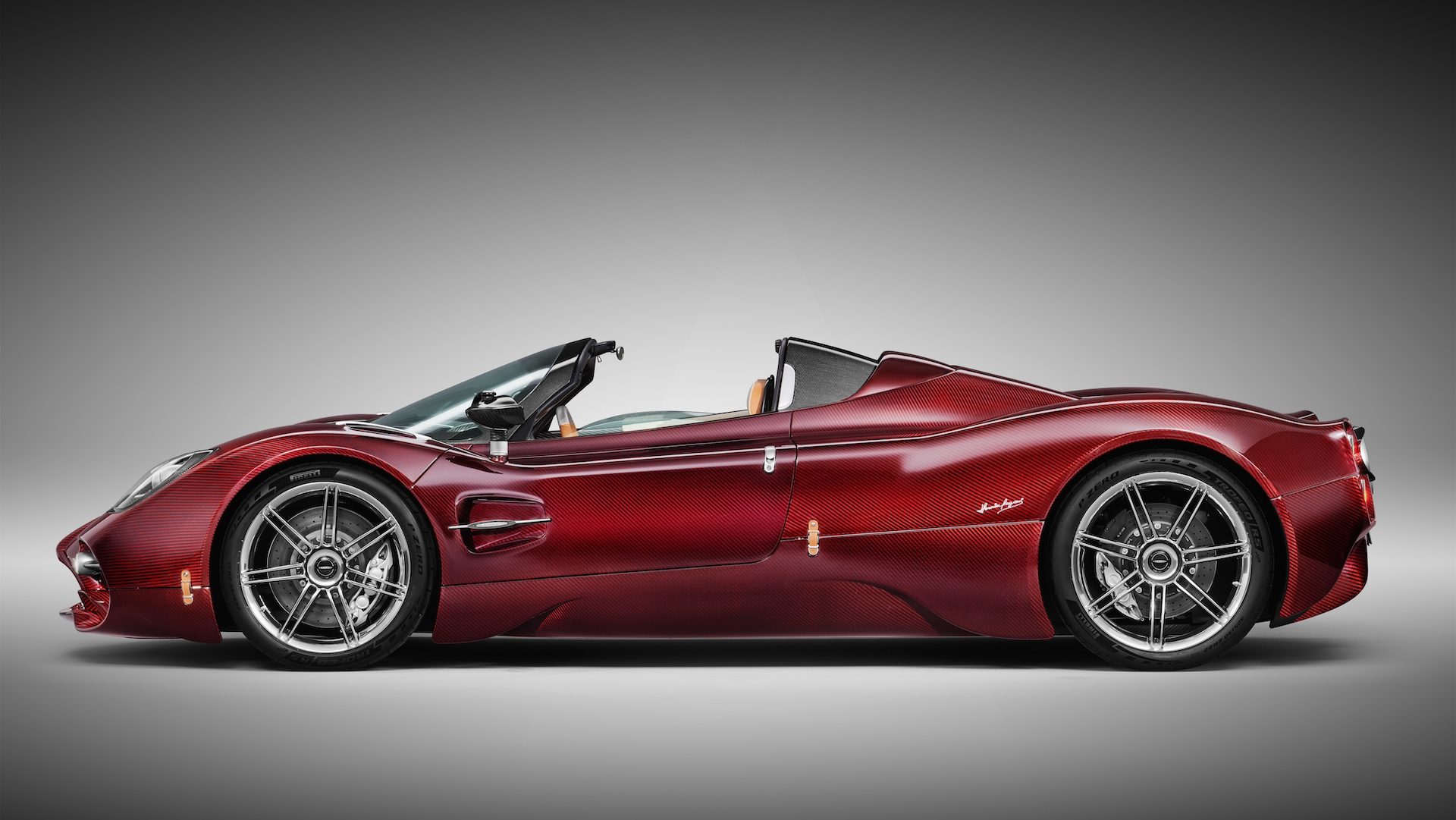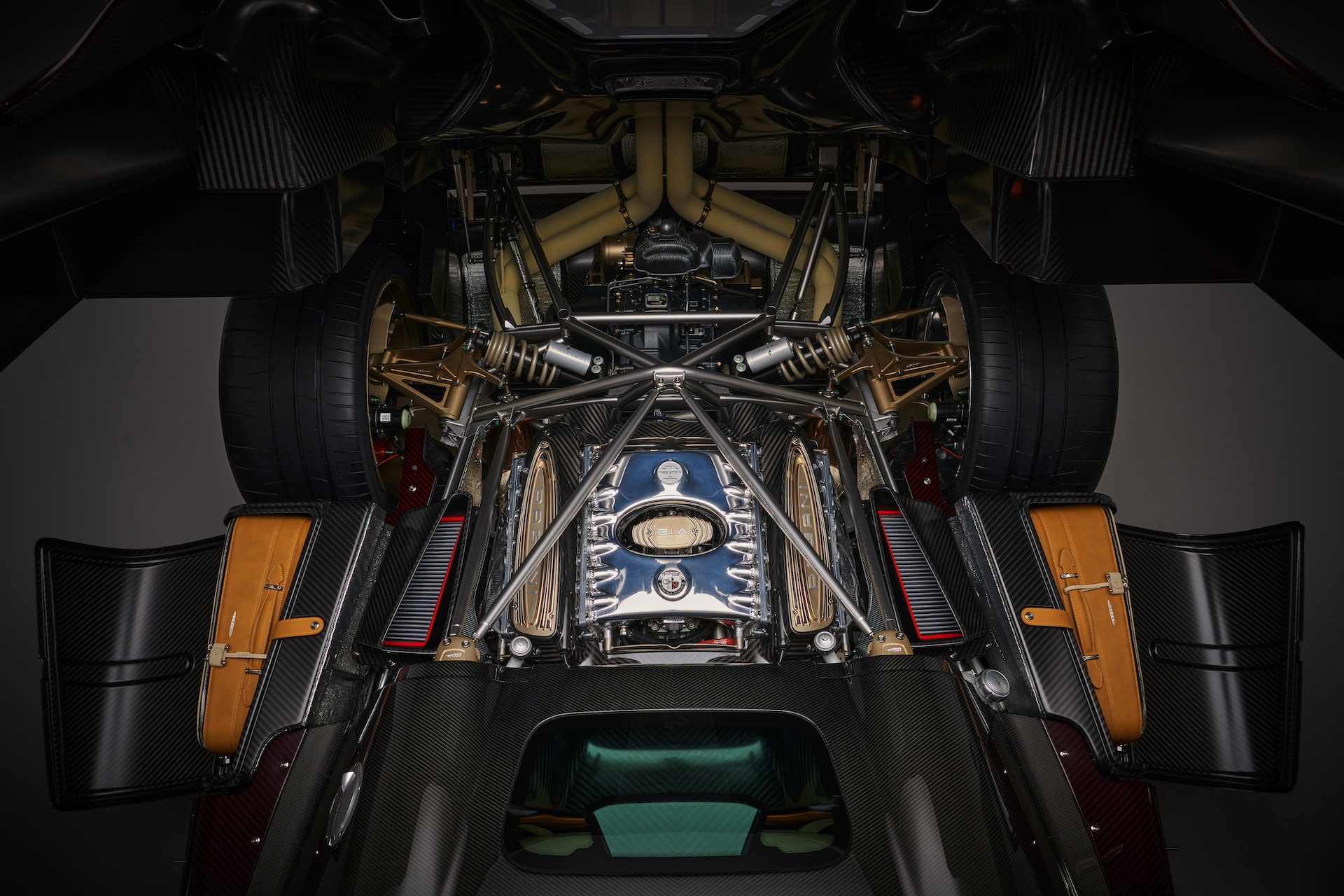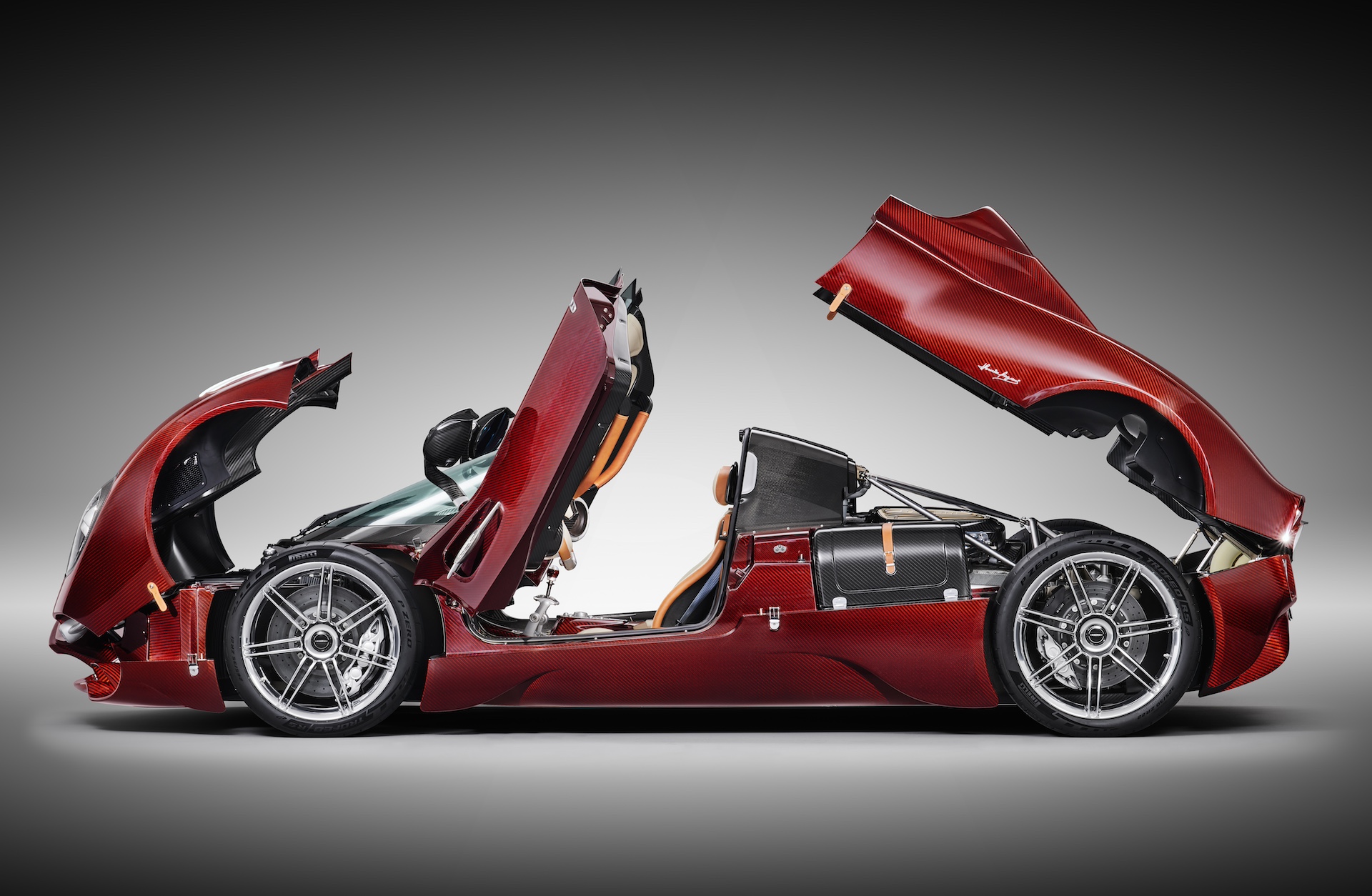

When it came time to develop the Pagani Huayra’s successor, the engine was the first and most important component to figure out. Horacio Pagani and his team worked closely with Mercedes-AMG to develop the motor that made the most sense at the time: a twin-turbo V8 hybrid. However, it quickly became obvious that electrifying Modena’s newest hypercar added too much weight and ruined the family recipe—though there was an even heftier reason why a hybrid Pagani wouldn’t see the light of day.
The Utopia was ultimately unveiled in Sept. 2022, powered by what’s become Pagani’s middle finger to the industry: a 6.0-liter, twin-turbo V12. It produces 852 horsepower and can be had with a traditional manual transmission. No electric motors, no batteries. As Horacio Pagani explained to me at the unveiling of the Utopia Roadster earlier this month, the lack of customer interest in a hybrid (and ultimately, EVs) put the final nail in the project’s coffin.

“In reality, no one is interested in a hybrid car,” Pagani told The Drive. “And I have hybrids in my collection; I have a Porsche 918 and a few more. But when it’s time for me to take a Porsche out for a spin, I’ll take my 911R or Carrera GT. Our clients think along those lines. I believe that if you ask people, most of them will say that a hybrid is something extraordinary because it has all the problems of an electric car and all the problems of a combustion car—along with higher [development and maintenance] costs.”
With the current AMG V12 in the Utopia Coupe and Roadster developed to meet worldwide regulations, there was no need to reinvent the wheel then and introduce a hybrid or even a fully electric Pagani. The Argentinian visionary explained that back in 2017, an entire team was assembled to explore these propulsion systems, but once again, the combination of a severe weight penalty and lack of customer interest brought things to an end.
“The hybrid V8 was considered, but the car was just too heavy, 400 or 500 kilos more, and our clients didn’t want anything to do with it. We have to build what the client is going to buy from us,” said Pagani. “In 2017, we built a team to work on an EV. The whole team was focused and excited—including myself—and we defined the concept for this car and we got to work with Mercedes-AMG and other partners. We even started working with Lucid, which has excellent technology in the world of EVs. But then this is what happened: customers were not interested.
“It’s not about being stubborn on whether it’s electric or hybrid—they are all fresh challenges for us. Pagani is a family, we don’t have a massive automaker or conglomerate behind us, we have to build what the customer wants to buy and we have to have lots of technology to rapidly pivot in case we need to change,” he added.


Not far from where my conversation was taking place with Pagani, Lamborghini was pulling the sheet off its new supercar; the Temerario. You guessed it, it’s a hybrid. Whether Lamborghini is being pressured from up top by its Volkswagen Group owners, or their clients are actually demanding electrified supercars, they won’t say, but Lambo is not alone. Both Ferrari and Maserati are also bolstering their hybrid and electric offerings to better comply with regulations.
According to Pagani, the current V12 and its future evolutions are homologated until 2031, allowing him to “give the client what it wants” until then. As far as what’s coming after 2031, Pagani put it this way: “We’re doing everything we can to keep the V12.”
Got a tip? Email us at tips@thedrive.com